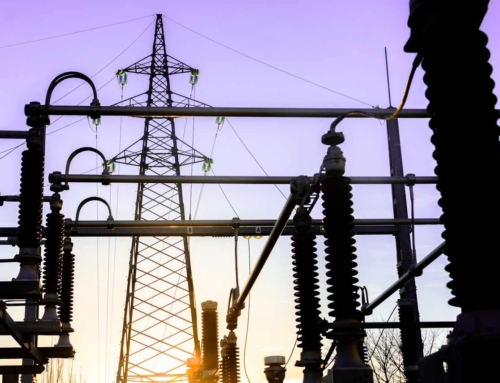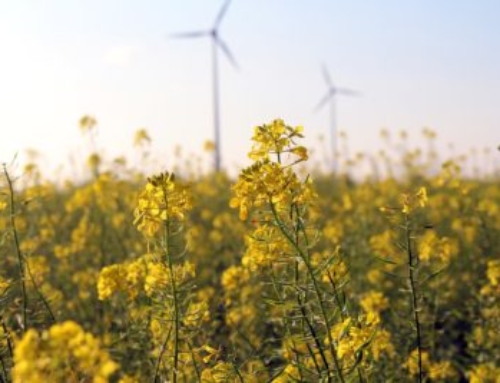You may think that the clothes you wear have little impact on the environment, but you’d be wrong. Almost 25% of all insecticides and 10% of pesticides used on the planet are applied to cotton crops, even though they make up less than 3% of crops worldwide. Thankfully, there is an increasing number of companies dedicated to sustainable, upcycled, and pesticide-free clothing.
You can feel good knowing your clothing not only looks great but is positively impacting and protecting the world around you. Check out these 12 amazing eco-friendly clothing brands we love!
1. Threads 4 Thought
Founded in 2006 and based in New York City, this clothing brand features modern apparel and activewear that is suitable for men and women, as well as a variety of body types. Individuals looking for athletic clothing and high-quality wardrobe staples will love these amazing outfits. To top it all off, this eco-friendly clothing brand has made it its mission to produce clothing using organic, sustainable, and recycled materials in an effort to reduce waste that is common in the fashion industry.
2. Amour Vert
Another eco-friendly clothing brand with a zero-waste philosophy, Amour Vert believes in providing high-quality, locally sourced clothing. They make sure all of the clothes are produced no more than 20 miles from their base in San Francisco. They offer plenty of casual and work-appropriate clothing for women and some adorable clothing items for babies and children. With non-toxic dyes and sustainable fabrics, you can feel good about dressing yourself and your children in these fashionable and sustainable clothes.
3. Alternative Apparel
If you’re wanting to get some basic apparel that’s friendly for the environment, Alternative Apparel fits the bill. With clothing and accessory options for men and women, there’s something for everyone. Started in 1995, this brand’s mission is to pursue eco-friendly, organic clothing that utilizes low-impact dyes and recycled fiber and material in clothing construction. They also strive to create safe and clean working conditions for all of their employees around the world. With a motto of “Soft, Simple, Sustainable,” you know you’ll feel just as good wearing these clothes as you do about buying them.
4. Cuyana
High-quality staples are the mainstays of Cuyana. For women who prefer a minimalist wardrobe, these essentials provide a luxurious and stylish approach to traditional pieces that will last for years to come. Another San Francisco-based company, Cuyana focuses on streamlined production that reduces environmental waste, as well as a donation program for women’s organizations.
5. People Tree
With a friendly, cute approach to fashion, this woman’s fashion company based in the UK get’s our eco-friendly seal of approval through their use of sustainable practices, organically produced cotton, and biodegradable materials. They offer a variety of clothing including flattering dresses, workwear, beautiful dress pants, skirts, and cute tees. Even their clothing labels are made from FSC-certified paper—how’s that for eco-friendly details?
6. PACT
Located near the beautiful mountains of Boulder, Colorado, it’s no surprise that this eco-friendly clothing brand takes you back to the basics. They offer incredible quality men’s, women’s, and children’s apparel including tops, loungewear, underwear, dresses, and more. Their prices are affordable and their clothes are soft. PACT has a promise to “do no harm” and focuses on Fair-Trade Certified, responsibly-made, organic cotton basics.
7. Conscious Collection by H&M
Leading the world in organic cotton use, H&M is striving for more environmentally conscious efforts through their Conscious Collection. This Swedish brand has taken the world by storm with their affordable and fun fashion. Now customers can feel even better about purchasing from a company doing their part for the environment.
8. Patagonia
This eco-friendly clothing brand was one of the first companies to recognize the importance of environmental sustainability in the fashion industry. Their “do no harm” mission aligns with the way they treat their workers and materials. They also want their Fair Trade Certified factories to benefit their employees in Los Angeles, Sri Lanka, and India. Aside from the environmental focus, Patagonia provides some of the best lightweight and warm outdoor clothing and gear on the market for both men and women.
9. Organic Basics
Organic cotton and sustainable production through the use of solar and wind energy are the fundamentals of this Denmark-based company. They focus solely on high-quality, antibacterial underwear for men and women. Organic Basics incorporates SilverTech in their underwear design to keep you cool and reduce bacteria and odor so you can wear their underwear longer and enjoy it more.
10. Eileen Fisher
This eco-friendly clothing company stands out for their use of organic cotton as well as organic linen. They also take a stance on social injustice around the world by continuing ethical and responsible practices in their own company. Eileen Fisher features a clothing style that is simple and chic for anyone looking to grab some pieces for a solid capsule wardrobe.
11. EcoVibe Apparel
Flowy, casual, boho vibes emanate from EcoVibe, along with more traditional denim button-ups, tees, and classic staples. What began in 2010 has turned into a fantastic eco-friendly brand that uses sustainable practices and focuses on giving back by donating 1% of their proceeds to For the Planet every year.
12. Outdoor Voices
The final eco-friendly clothing brand on our list creates incredible fitness apparel for women by using recycled water bottles to produce their polyester fabric. How cool is that? Aside from recycled materials, Outdoor Voices also focus on responsibly sourcing other fabrics, such as their merino wool, while making sure they have ethical working conditions for their employees worldwide.
At Spring Power and Gas, we love supporting brands that are environmentally conscious and responsible. These eco-friendly clothing brands share our commitment to keeping our planet healthy and reducing waste from human activities. Learn more about what Spring Power & Gas is doing to protect our environment today.







